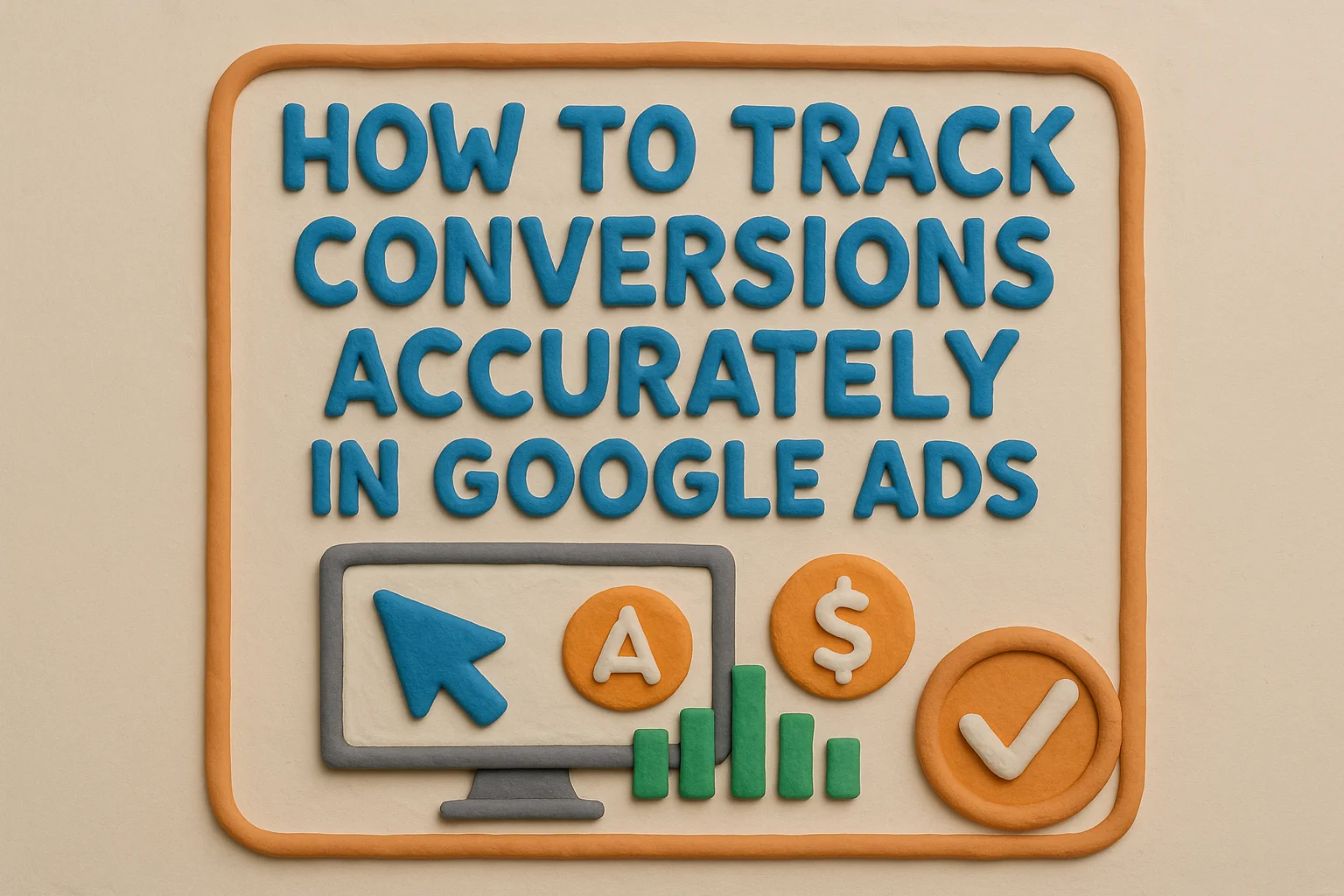You can’t improve what you don’t measure—especially in PPC. That’s why knowing how to track conversions accurately in Google Ads is critical for running high-performing campaigns.
If your tracking is off, your decisions will be too. You might increase spend on underperforming keywords or cut campaigns that are actually working. Worse, you could be completely blind to your true ROI.
In this guide, we’ll walk you through how to set up accurate conversion tracking in Google Ads, what pitfalls to avoid, and how to make sure your data leads to smarter decisions.
Why Accurate Conversion Tracking Matters
Conversion tracking helps you measure the actions users take after interacting with your ads—whether it’s filling out a form, making a purchase, calling your business, or downloading a resource.
When you track conversions accurately, you can:
✅ Measure ROI and ROAS with confidence
✅ Optimize bids using real performance data
✅ Attribute success to specific campaigns, keywords, or ads
✅ Identify wasted spend and missed opportunities
✅ Improve lead quality and customer acquisition strategy
Step 1: Choose What Counts as a Conversion
Start by defining what a conversion means for your business.
Common Conversions to Track:
- Purchases or transactions (eCommerce)
- Form submissions or quote requests
- Phone calls from ads or landing pages
- Signups for newsletters, trials, or webinars
- Button clicks or specific page views (e.g., “Thank You” pages)
Every business is different, so your most valuable action might not be a sale—it could be a qualified lead.
Step 2: Set Up Google Ads Conversion Tracking
There are two primary ways to track conversions accurately in Google Ads:
1. Using the Google Ads Tag (Global Site Tag + Event Snippet)
✅ Best for: Websites not connected to Google Analytics
✅ What you’ll need:
- Access to your website’s code
- Thank-you page URL or button click trigger
2. Importing Conversions from Google Analytics (GA4)
✅ Best for: Businesses already using Google Analytics
✅ Benefits: Easier tracking setup, deeper engagement data
✅ Tip: Be sure your Google Ads and GA4 accounts are properly linked and that conversions are marked as “primary” in GA4.
Step 3: Use Google Tag Manager for Easier Management
If you’re not using Google Tag Manager, now is the time to start. GTM simplifies the process of managing tags and tracking events without needing to manually edit code.
Benefits:
- Set up click-based conversions (e.g., “Schedule Demo” buttons)
- Easily test and debug using GTM’s preview mode
- Streamline tag updates without a developer
Pro Tip: Use GTM alongside Google’s Tag Assistant and Chrome DevTools to verify everything is firing correctly.
Step 4: Test and Validate Conversion Tracking
Before you launch or optimize any campaigns, verify your setup:
✅ Use Google Tag Assistant or Google Ads’ conversion tracking status to check if conversions are firing
✅ Visit your site, complete a test action, and confirm the conversion is recorded
✅ Use Google Ads > Tools > Conversions to view setup status
Step 5: Track Multiple Conversion Types Separately
Not all conversions are created equal. Set up different conversion actions with unique values to better understand campaign performance.
For example:
- A lead form = $50 value
- A free trial signup = $100 value
- A product sale = actual purchase value
Segmenting helps you optimize for what really moves the needle.
Step 6: Use Enhanced Conversions for Even Better Accuracy
Enhanced conversions allow you to send hashed customer data (like email addresses) to Google to improve attribution, especially across devices.
✅ Great for lead gen businesses
✅ Helps capture more conversions when cookies are limited
✅ Improves Smart Bidding accuracy
Step 7: Monitor, Analyze, and Adjust
Once your tracking is live:
- Monitor conversion volume and cost-per-conversion in Google Ads
- Filter by campaign, keyword, or ad group to identify what’s working
- Adjust bids, targeting, and creative based on conversion performance
How Twofold Helps You Track Conversions Accurately
At Twofold, we don’t guess—we measure. Our Google Ads management includes:
✅ Full conversion tracking audits
✅ Setup via Google Tag Manager, GA4, or direct code
✅ Ecommerce tracking and lead attribution
✅ Ongoing optimization based on real, reliable data
✅ Custom dashboards so you always know what’s working
Whether you’re just getting started or suspect your current setup is off, we can help you track what matters and eliminate the guesswork.
Let’s Fix Your Tracking and Grow Smarter
Final Thoughts
If you’re not tracking conversions—or you’re tracking them inaccurately—you’re flying blind. Knowing how to track conversions accurately in Google Ads is the foundation for profitable campaigns, smarter decisions, and better results.
And if your current data doesn’t seem to add up? That’s a sign it’s time for a tracking tune-up.
